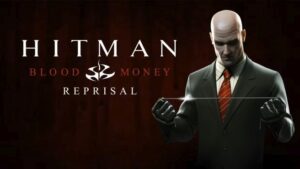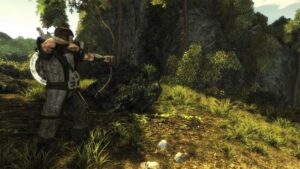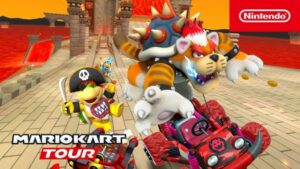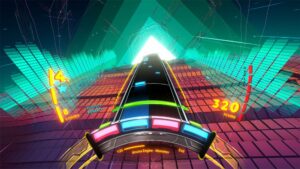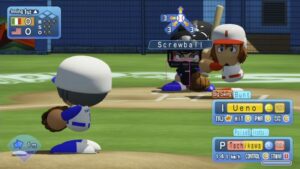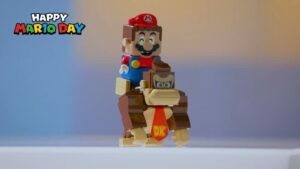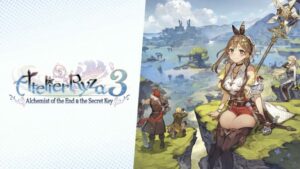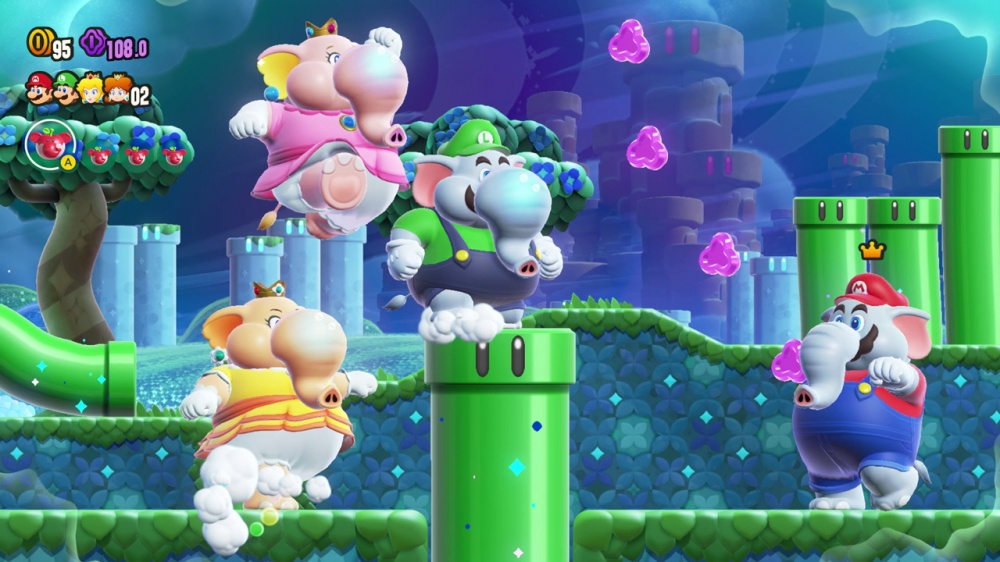
In Nintendo’s latest interview for Super Mario Bros. Wonder, the team spoke about taking inspiration from how 3D Mario games are made.
Producer Takashi Tezuka spoke about a “crisis” as the project began stemming from the thought that 2D Mario games might be too tough for some to complete. Tezuka said the team “started to think about what we could do to make players want to advance”. This led to Nintendo considering more freedom and using 3D Mario titles “as a reference point”, according to designer Koichi Hayashida.
Hayashida, Tezuka, director Shiro Mouri, and art director Masanobu Sato shared the following about 3D Mario inspiration for Super Mario Bros. Wonder:
This is the first 2D Mario game in about 11 years, but I’m sure for some Nintendo Switch players, it’ll be their first side-scrolling 2D Mario platformer. Did this influence the game’s development?
Hayashida: We discussed a lot about what kind of 2D Mario would be appropriate for this day and age.
Tezuka: We ventured into this project with a sense of crisis from the beginning.
A sense of crisis?
Tezuka: Compared to 3D Mario games, 2D Mario games may seem to have less visual variation and be more challenging to complete. But then we made a small discovery when developing the smartphone app Super Mario Run (15). One of the development team members who wasn’t that skilled at Mario platformers told us, “I want to see more of the game, but I can’t progress because I’m not that good at this type of game.”
(15) A smartphone app released in December, 2016. Tap Mario as he continues to run, and aim for Bowser’s Castle.
Sato: I heard that, in the course where you need to jump on mushroom platforms consecutively at the start, this person kept falling into the pit.
Tezuka: We didn’t think it was that challenging, so we hadn’t realized you’d feel discouraged from continuing the game if it felt too difficult. So we started to think about what we could do to make players want to advance. Then we thought, maybe there isn’t enough freedom. For example, I feel that Super Mario Odyssey is designed so that all players can reach the ending, no matter how they progress through the game.
Hayashida: I think that this gameplay is adapted to modern times. Tezuka-san suggested we could perhaps use 3D Mario platformers as a reference point, since their gameplay is designed for players to reach the end.
I see. Here, too, you took inspiration from how 3D Mario games are developed.
Tezuka: I felt that 2D Mario games often had the reputation of being unforgiving. Compared to 3D Mario games, just one mistimed action can lead to a bigger mistake, since you have fewer options in terms of movement. In this game, we’ve changed that. We’ve designed it so that players can conquer the game with their ideas and use their heads, not just their skills, to progress.
Hayashida: With all that in mind, we felt that a 2D Mario game adapted to the times would be one that you could complete your way. For example, up until now, 2D Mario games have been in a format where players complete each course in sequence. But in this title, players who want a challenge can start with a difficult course, and beginners can start with an easier one. Each course has its difficulty indicated too.
We even implemented a method used in 3D Mario games by which you can unlock specific courses with key items that you collect. That key item is what’s called the Wonder Seed.
You can obtain Wonder Seeds upon reaching the end of each course, but even if you can’t complete a course, you can still buy them at the Poplin Shop by collecting flower coins.
Mouri: We’ve also increased the number of playable characters to 12, and players can freely choose what ability to add to their own character.
Super Mario Bros. Wonder arrives for Switch on October 20, 2023.
- SEO Powered Content & PR Distribution. Get Amplified Today.
- PlatoData.Network Vertical Generative Ai. Empower Yourself. Access Here.
- PlatoAiStream. Web3 Intelligence. Knowledge Amplified. Access Here.
- PlatoESG. Carbon, CleanTech, Energy, Environment, Solar, Waste Management. Access Here.
- PlatoHealth. Biotech and Clinical Trials Intelligence. Access Here.
- Source: https://nintendoeverything.com/super-mario-bros-wonder-3d-inspiration/
- :has
- :is
- :not
- :where
- $UP
- 11
- 12
- 15%
- 20
- 2016
- 2023
- 2D
- 3d
- a
- ability
- About
- According
- Action
- adapted
- add
- advance
- age
- aim
- All
- also
- an
- and
- app
- appropriate
- ARE
- Arrives
- Art
- AS
- At
- BE
- because
- been
- began
- Beginners
- Beginning
- being
- bigger
- but
- buy
- by
- called
- CAN
- challenge
- challenging
- changed
- character
- characters
- Choose
- Coins
- collect
- Collecting
- compared
- complete
- considering
- continues
- continuing
- could
- course
- courses
- crisis
- day
- December
- designed
- Designer
- developed
- developing
- Development
- development team
- Devs
- DID
- difficult
- Difficulty
- Director
- discouraged
- discovery
- discussed
- do
- each
- easier
- end
- ending
- enough
- Even
- example
- Falling
- feel
- felt
- fewer
- First
- flower
- following
- For
- format
- Freedom
- from
- game
- gameplay
- Games
- good
- had
- Have
- he
- heads
- heard
- here
- How
- HTTPS
- i
- ideas
- if
- implemented
- in
- increased
- indicated
- influence
- Inspiration
- into
- IT
- items
- ITS
- jpg
- jump
- just
- just one
- kept
- Key
- Kind
- latest
- lead
- Led
- less
- Lot
- made
- make
- Mario
- Matter
- May..
- maybe
- Members
- method
- might
- mind
- mistake
- Modern
- more
- movement
- Need
- Nintendo
- Nintendo Switch
- no
- now
- number
- obtain
- october
- of
- often
- on
- ONE
- Options
- own
- perhaps
- person
- PIT
- Platforms
- plato
- Plato Data Intelligence
- PlatoData
- players
- Point
- Progress
- project
- reach
- reaching
- realized
- reference
- released
- reputation
- Run
- Said
- see
- seed
- seeds
- seem
- sense
- Sequence
- shared
- Shop
- since
- skilled
- skills
- small
- smartphone
- So
- some
- specific
- start
- started
- Still
- Super
- sure
- Switch
- taking
- Tap
- team
- Team members
- terms
- Tezuka
- that
- The
- their
- Them
- then
- There.
- they
- think
- this
- thought
- Through
- times
- Title
- titles
- to
- told
- too
- took
- tough
- type
- unlock
- until
- upon
- us
- use
- used
- using
- want
- was
- Way..
- we
- What
- when
- which
- WHO
- with
- wonder
- would
- years
- you
- Your
- zephyrnet

